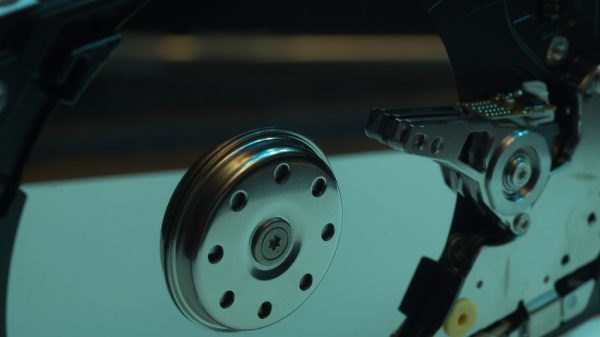
When a laptop, smartphone, printer, or other device is past its prime, what happens to it? Tossing electronics into the trash is no longer accepted. States have laws that require electronics recycling. What if those devices store personal information like passwords, account numbers, and other sensitive data. You don’t want that information falling into the wrong hands.
That couldn’t happen! Guess again. You’ve printed your income tax forms and filed them in your safe. You’re safe. What you don’t realize is a copy of those printed taxes are often stored in the printer’s memory. All-in-one printers tend to have more memory due to the functions the printer can handle. It’s handy when you want to reprint something from the history, but it’s dangerous if someone else prints out your private information.
Many electronics have the potential to store a lot of personal information like birth dates, names, banking information, and passwords. In the wrong hands that information is ideal for stealing a person’s identity. Some of the items you own may have stored your information. They include electronics like:
- Cameras
- Computers
- Gaming consoles
- Phones
- Printers
- Routers
- Smart watches
- Streaming devices
- Tablets
Before you get rid of any electronic device that has built-in memory, you need to know there are methods used to eliminate that personal data. Professional IT and electronics asset disposition companies do this for you through data destruction. There are three ways to do this: wiping, degaussing, and shredding.
What is Wiping?
Wiping is a process that deletes information off of a hard drive. It’s different from simply moving an item to the trash. When you hit delete, the information is gone from one area, but it’s still secure in the hard drive and could be recovered.
To do this, a back-up copy of the information on your hard drive is saved to another computer, the cloud, a flash drive, a thumb drive, or an external hard drive. Once you’ve safely stored a back-up copy of your information somewhere you use software to completely and permanently erase everything in your hard drive.
Software that’s used to wipe information deserves a closer look. Some software options wipe the data and replace it with nonsense characters. If this is what’s done, there is still a chance that the data could be recovered.
You could do it yourself by taking apart the hard drive and using something to damage the hard disk so that it will never work again. If you do this, no one else could reuse the computer. A clean install of the original operating system that came with the computer when you bought it is another option. Be aware that a clean install will also get rid of all updates and software additions.
If you’re wiping a printer, phone, or other electronic device, steps are different. To completely erase a printer’s memory, unplugging the printer may be enough. The printer’s guide will offer tips on wiping the printer’s memory if battery backup is a feature.
For a cellphone, a factory reset isn’t going to be enough. Encrypt your data first and then do the factory reset. With so many devices in your home, it can become challenging learning how to wipe everything before you recycle it.
ERI’s data destruction protocol is the strictest in the industry, earning NAID certification at all eight facilities, and should be the only choice when data destruction is needed.
What is Degaussing?
Carl Friedrich Degauss helped invent the process known as Degaussing. It’s a process that uses magnets to destroy magnetic fields. It was first used in World War II to help avoid damage from German underwater magnetic mines.
Storage units like hard drives use magnetic domains to record information. To eliminate it, destroying those magnetic domains gets rid of the information stored on that hard drive. Accomplishing this is done in one of three ways. AC currents can manipulate the magnetic fields. DC power is also used in the same way. A high-strength magnet can also be used to eliminate the magnetic domains. Degaussing is not possible on optical or solid-state storage devices.
What is Shredding?
Shredding is exactly what it sounds like. Think of it being like a paper shredder but for metal and plastic instead of paper. Industrial shredders shred electronic items like cell phones, circuit boards, hard drives, and storage devices. What they shred depends on the size of the shredder. They do small items like cellphones or a larger machine can shred a printer.
After shredding, machines separate the different materials. Plastics go into a different recycling container than copper wiring and metal. All of it can be melted down and reused.
ERI Direct holds multiple certifications in electronic waste recycling. While all of the e-waste recycling company’s certificates are important, the NAID AAA Certification proves the company meets regulatory requirements. Regular audits prove the security, procedures, and training are all optimal. Discover more about ERI’s certifications. If you have questions or want to learn more, contact ERI at 1-800-ERI-DIRECT.